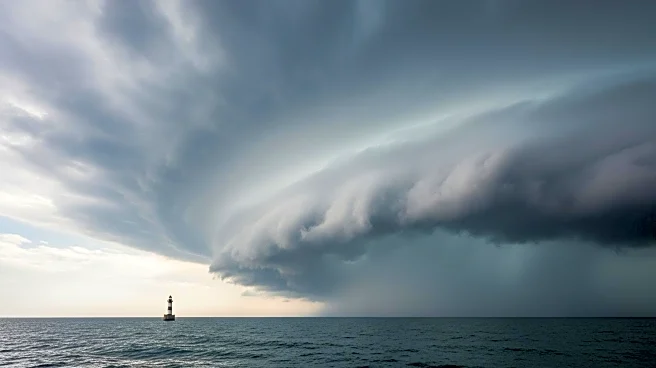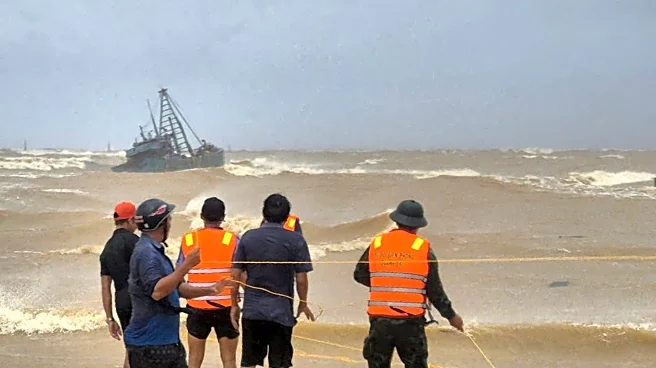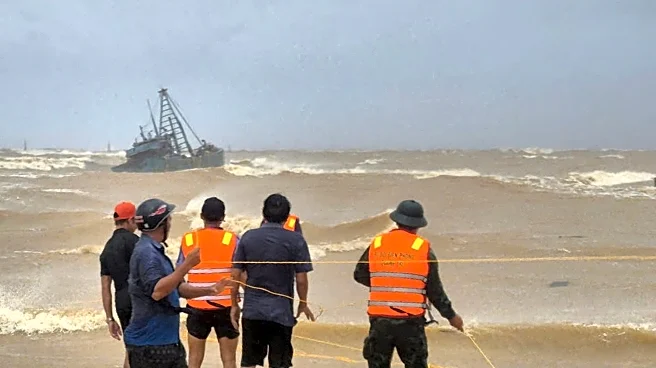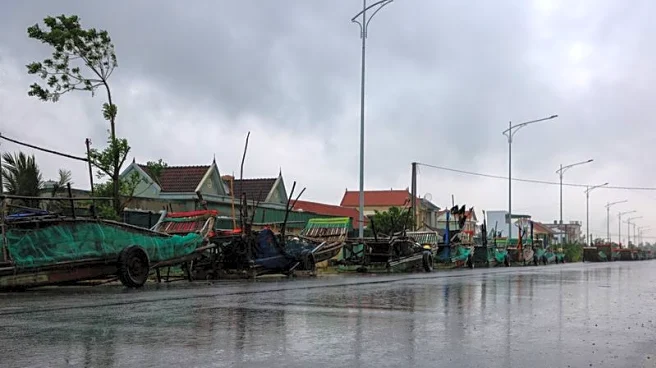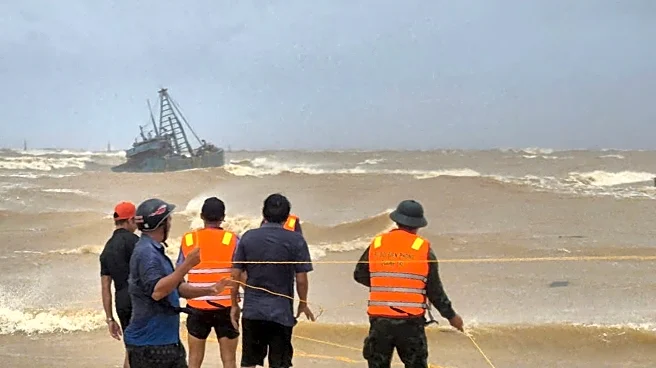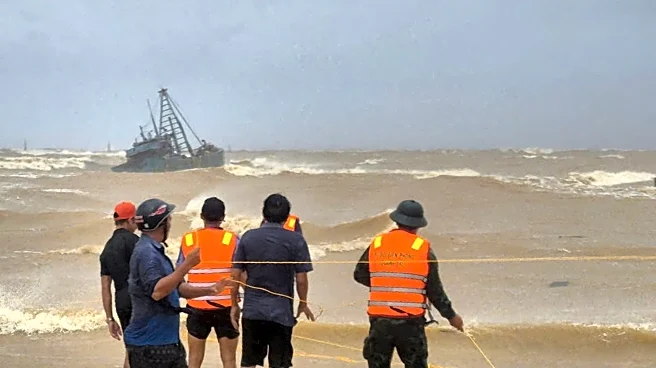What's Happening?
Typhoon Bualoi has struck north-central Vietnam, resulting in the deaths of at least six people and causing significant damage to homes and infrastructure. The storm, which is the tenth typhoon to hit Vietnam this year, has led to the evacuation of over 240,000 people from vulnerable coastal areas. The typhoon packed winds of up to 82 miles per hour and has caused waves up to 16 feet high. Authorities have suspended operations at four coastal airports and are searching for crews of boats that went down off Quang Tri province. Prime Minister Pham Minh Chinh has called for urgent efforts to tackle the devastation, including mobilizing rescue teams to clear debris and restore essential services.
Why It's Important?
The impact of Typhoon Bualoi highlights the vulnerability of Vietnam to natural disasters, particularly typhoons. The evacuation of hundreds of thousands of people and the suspension of airport operations underscore the severity of the situation. The storm's destruction of homes and infrastructure poses significant challenges for recovery and rebuilding efforts. The government's response, including the mobilization of rescue teams, is crucial in mitigating the immediate effects and preventing further loss of life. The event also serves as a reminder of the need for improved disaster preparedness and infrastructure resilience in the region.
What's Next?
As Typhoon Bualoi continues to move across Vietnam, heavy rain is expected to persist, potentially leading to further flooding and landslides. Authorities are on high alert for weakened dikes that could collapse and flood surrounding areas. The government is likely to continue its efforts to relocate affected populations and restore essential services. The long-term focus will be on rebuilding and strengthening infrastructure to better withstand future storms. International aid and support may be sought to assist in recovery efforts.
Beyond the Headlines
The frequent occurrence of typhoons in Vietnam raises questions about climate change and its role in intensifying weather patterns. The country's long coastline makes it particularly susceptible to such events, necessitating ongoing investment in climate adaptation strategies. The social and economic impacts of repeated natural disasters can be profound, affecting livelihoods and development. The situation also highlights the importance of regional cooperation in disaster response and management.

